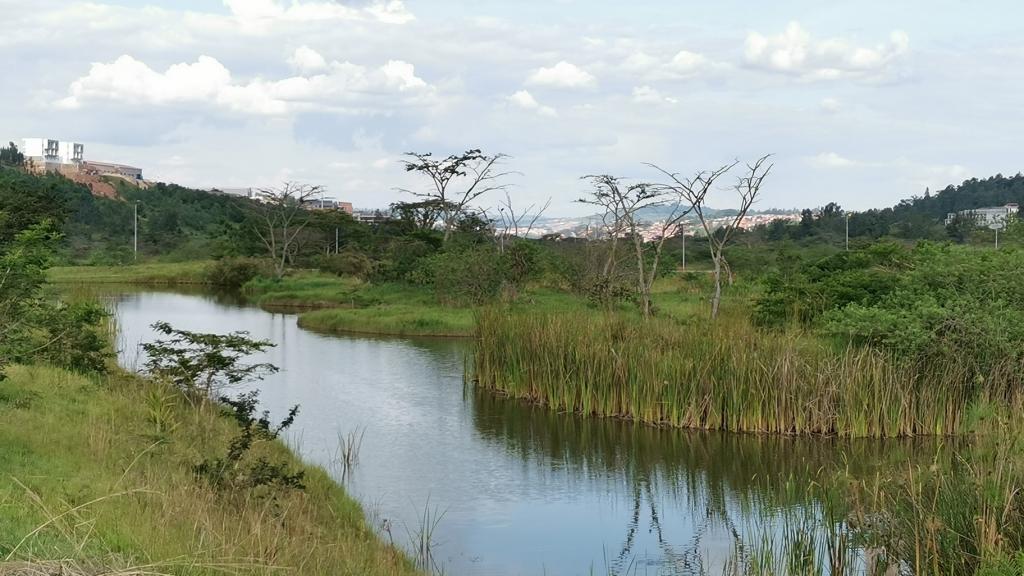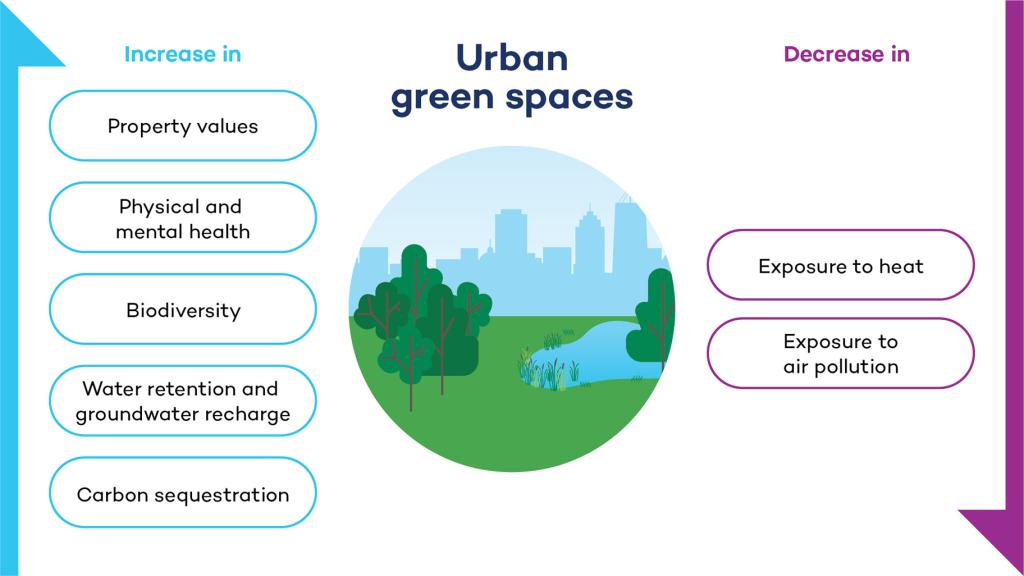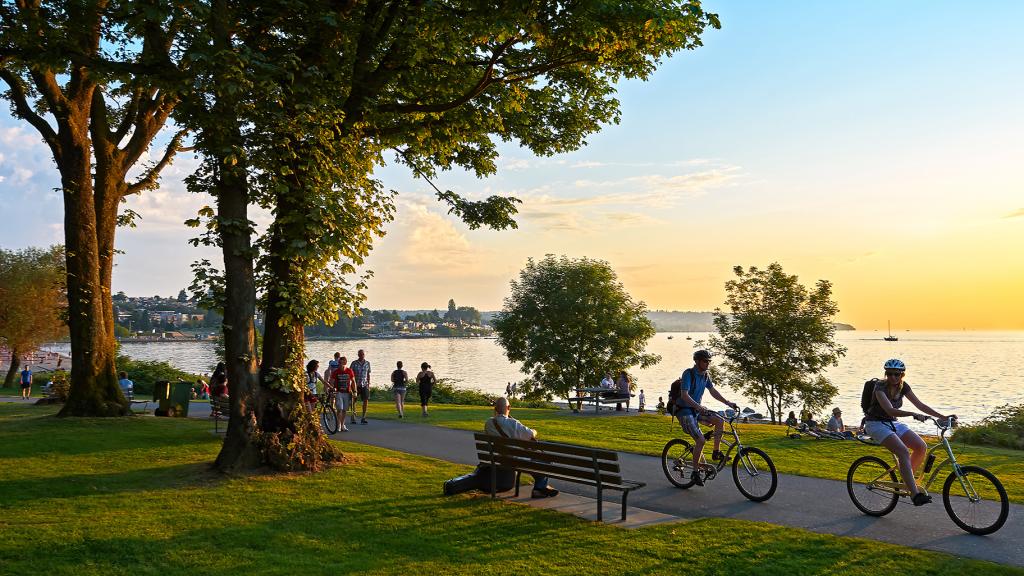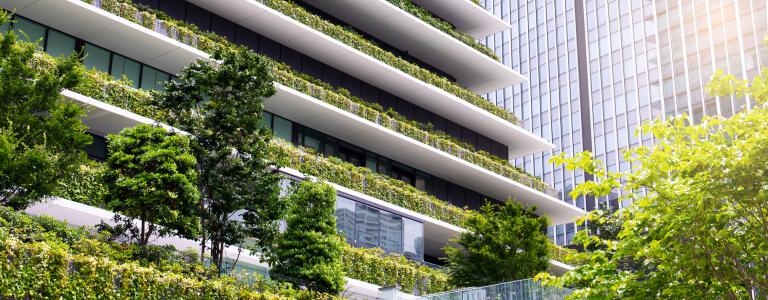The Value of Incorporating Nature in Urban Infrastructure Planning
Cities around the world are struggling to provide people with the infrastructure they need to thrive. Nature-based infrastructure delivers cost-effective, climate-resilient infrastructure services and generates a wealth of co-benefits for citizens, such as reduced air pollution and improved well-being. It also creates an enabling environment for other sustainable infrastructure. To maximize the benefits of NBI, the value of nature must be at the heart of strategic, cross-sectoral urban planning.
Infrastructure is a key enabler of sustainable development. It provides people with the services they need to thrive while also protecting the environment from human impacts, such as pollution. At the same time, urban development—if done unsustainably—is one of the main drivers of biodiversity loss and climate change. In cities, infrastructure needs are particularly high because urban areas are challenged by massive population growth and increasing climate impacts.
How can nature-based infrastructure foster sustainable cities?
For cities to be sustainable, urban infrastructure must be sustainable. According to the United Nations Environment Programme (UNEP), sustainable infrastructure systems are “planned, designed, constructed, operated and decommissioned in a manner that ensures economic and financial, social, environmental (including climate resilience), and institutional sustainability over the entire infrastructure life cycle.” This infrastructure can be nature based, built in a conventional way, or combine elements of both to form a hybrid infrastructure.
Building with—rather than against—nature has direct benefits for cities. The term nature-based infrastructure (NBI) includes areas or systems that harness nature to provide infrastructure services for people, the economy, and the environment. Examples of NBI include natural ecosystems, such as forests, mangroves, wetlands, and grasslands. But NBI can also involve engineered or “grey” structures that incorporate nature-based solutions, like rain gardens and green roofs.
NBI helps make cities more sustainable in three ways:
- NBI delivers cost-effective and climate-resilient infrastructure services, such as flood protection, water filtration, and temperature regulation. This helps provide people with the infrastructure they need for their safety, well-being, and livelihoods.
- In addition, NBI offers valuable co-benefits for communities and the environment. For example, NBI can support climate change mitigation and adaptation efforts, such as by sequestering carbon. These types of infrastructure can also provide habitats for threatened species, support people’s livelihoods, and offer space for recreation.
- Building with nature also enables investments in other sustainable infrastructure, in particular, in the areas of mobility, water, and energy. For example, urban green spaces help keep urban temperatures at bay, which in turn reduces heat-related efficiency losses from power systems and supports a stable energy supply from renewable sources.

Valuing nature’s benefits for sustainable urban infrastructure
NBI provides infrastructure services, mitigates costs from increasing climate impacts, and generates many added benefits for citizens. A new International Institute for Sustainable Development (IISD) report finds that if these benefits are taken into account, NBI in cities is, on average, 42% cheaper and creates 36% more value than relying only on grey infrastructure to provide the same infrastructure services. IISD case studies show that for each USD 1 invested, nature-based infrastructure in cities can generate up to 30 times that amount in returns for society, making investments in urban nature economically viable.
How do we know that? At IISD, we have developed an innovative methodology that allows us to quantify the costs, benefits, and risks of infrastructure projects over their entire life cycles. We have applied this Sustainable Asset Valuation (SAVi) methodology to more than 40 infrastructure projects around the world, covering a variety of different assets like roads, wastewater treatment plants, buildings, and NBI.
For example, we analyzed NBI investments in Rainbow Junction, a 140-ha mixed-use development in the city of Tshwane, South Africa. More specifically, we analyzed the outcomes of creating green roofs on new buildings and planting more trees. The assessment indicated that planting 1,000 additional trees would retain more than 6,600 m3 of rainwater, reducing the need to manage and treat stormwater.
NBI can also reduce health risks from extreme heat and reduce the need for conventional forms of cooling, such as air conditioning. Our analysis found that trees in Tshwane would cool down temperatures and cut energy needs for air conditioning by 156,000 kWh, the equivalent of USD 3.82 million per year. In addition, trees in Tshwane could sequester 250 tonnes of carbon dioxide.
Over 40 years, planting and maintaining these trees would cost about USD 142,000. Yet, NBI could help the city avoid costs while delivering additional benefits worth USD 4.42 million. In other words, for each USD 1 invested in planting trees in Tshwane, the result is USD 31 in benefits for society.

Building with nature also enables investments in other sustainable infrastructure, such as projects that support mobility, water, and energy needs. In a recent SAVi assessment of a non-motorized transport (NMT) proposal in the city of Coimbatore, India, this synergy is clearly evident. The NMT project consists of a comprehensive network of walking and cycling routes across the city, implemented over a 15-year period. It will have a wide range of benefits, including reduced air pollution and carbon dioxide emissions, health benefits from increased physical activity, a reduction in the number of road accidents, and increases in retail and property prices.
IISD’s economic valuation found that investing approximately USD 121 million in the project will yield net benefits of USD 486 million to USD 510 million over a 23-year period. For example, the NMT network will lead to health benefits worth between USD 84 million and USD 91 million by increasing physical activity and reducing air pollution. In addition, the shift from motorized transport to the NMT network will reduce carbon dioxide emissions worth USD 2 million over the project period.
Yet, the assessment also considers that cycling in a polluting urban environment tends to have worse health effects than using motorized forms of transport. This increased exposure to air pollution reduces the overall health benefits for NMT users. Implementing NBI in Coimbatore would be a way to improve air quality and thus create healthier conditions for walking and cycling. Moreover, expanding NBI, such as parks and street trees, in Coimbatore could make such active forms of mobility more comfortable by reducing extreme heat.
In turn, transport corridors offer a key space for a network of NBI in cities, such as green paths, trees along roads, and green roofs on bus stops. Sustainable mobility options such as mass transit and cycling also require less space than transport systems built around private vehicles, which can free up space for NBI, even in dense urban areas.

Leveraging the benefits of nature for sustainable cities requires strategic urban planning with NBI at its heart
To make the most of the benefits of urban nature, NBI needs to become a central part of city planning, project assessments, and financing strategies. Planners, policy-makers, and budget holders need to take a systemic perspective that considers a portfolio of infrastructure investments and maximizes their mutual benefits. This means developing cross-sectoral, strategic plans for sustainable urban development and using systemic assessments to evaluate which NBI investments best support the city’s infrastructure and sustainability objectives.
Cities around the world are working hard to create inclusive, healthy, and climate-resilient environments for their residents. Many are committed to ambitious climate goals and to protecting urban biodiversity, for example, as part of the Global Covenant of Mayors and the CitiesWithNature initiatives. In the face of constrained public budgets and mounting global crises, embracing the benefits of NBI and its synergies with urban infrastructure offers the opportunity to support a transition to sustainable cities.
This article builds on IISD’s new report, The Value of Incorporating Nature in Urban Infrastructure Planning. The report is available on the NBI Global Resource Centre website.
You might also be interested in
The 'spongy' cities of the future
Tangled mats of muddy vegetation line the footpaths of Underwood Park, a narrow stripe of green winding along a creek beneath the small volcanic cone of Ōwairaka (Mt Albert) in Auckland, New Zealand. In the water, clumps of sticks and the occasional plastic bag are marooned on protruding rocks and branches.
How Can We Work With Nature to Tackle Drought and Desertification?
Drought is one of the most devastating and pervasive challenges exacerbated by climate change. However, we can work to reduce its effects through nature-based solutions for land restoration and climate-smart agriculture.
IISD Annual Report 2022–2023
At IISD, we’ve been working for more than three decades to create a world where people and the planet thrive. As the climate crisis unfolds on our doorsteps and irreversible tipping points loom, our team has been focused more than ever on impact.
Investing in natural infrastructure for a shared future for all life
The Living Bridge of Meghalaya documents the story of the indigenous Khasi people who trained the living aerial roots of the Indian rubber fig tree to serve as bridges. These living root bridges crisscross rivers that swell in violent monsoons, which would likely wash away any other form of bridge. They have provided reliable and safe passage to local populations for hundreds of years and are a stunning example of natural infrastructure.
